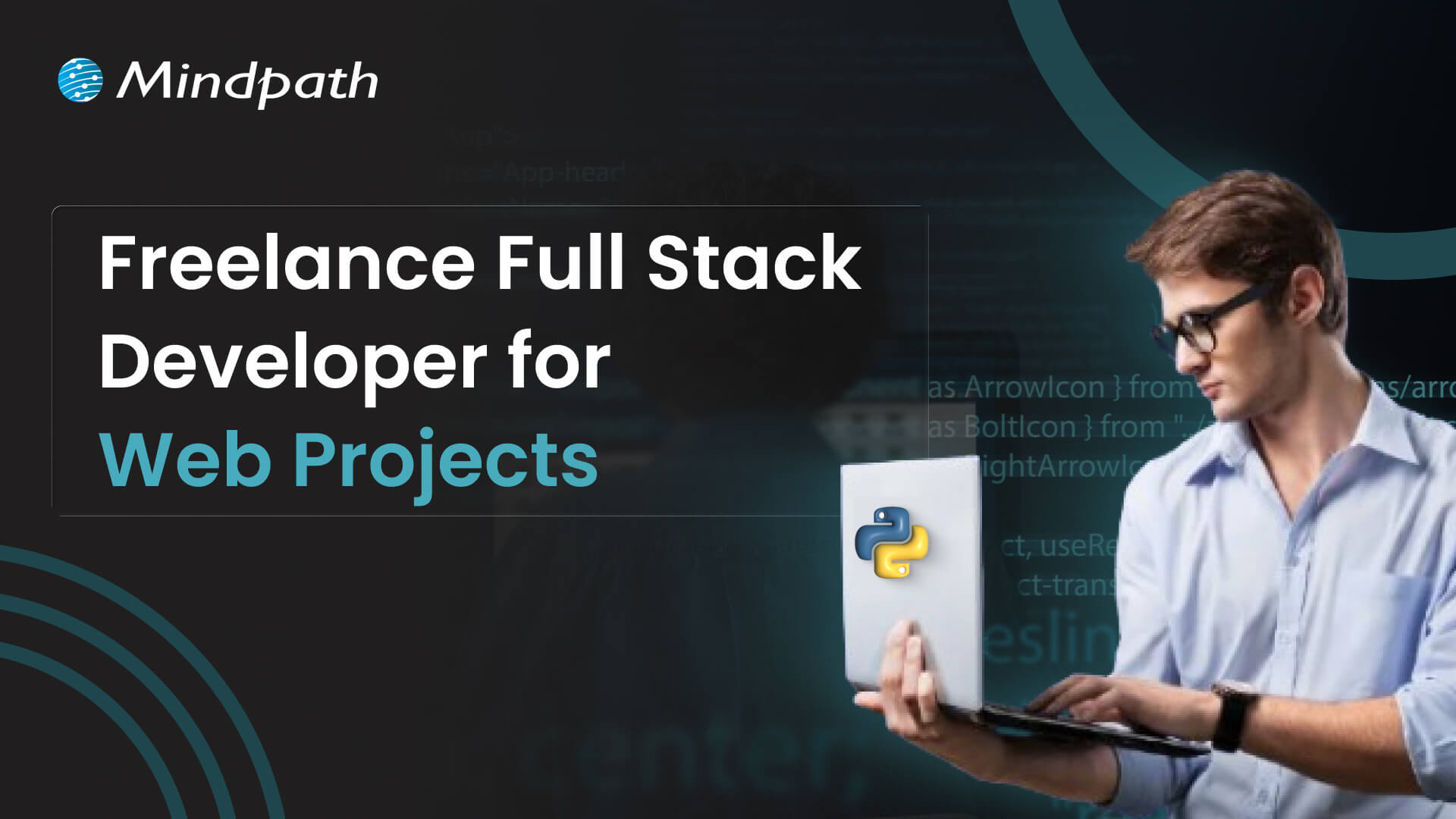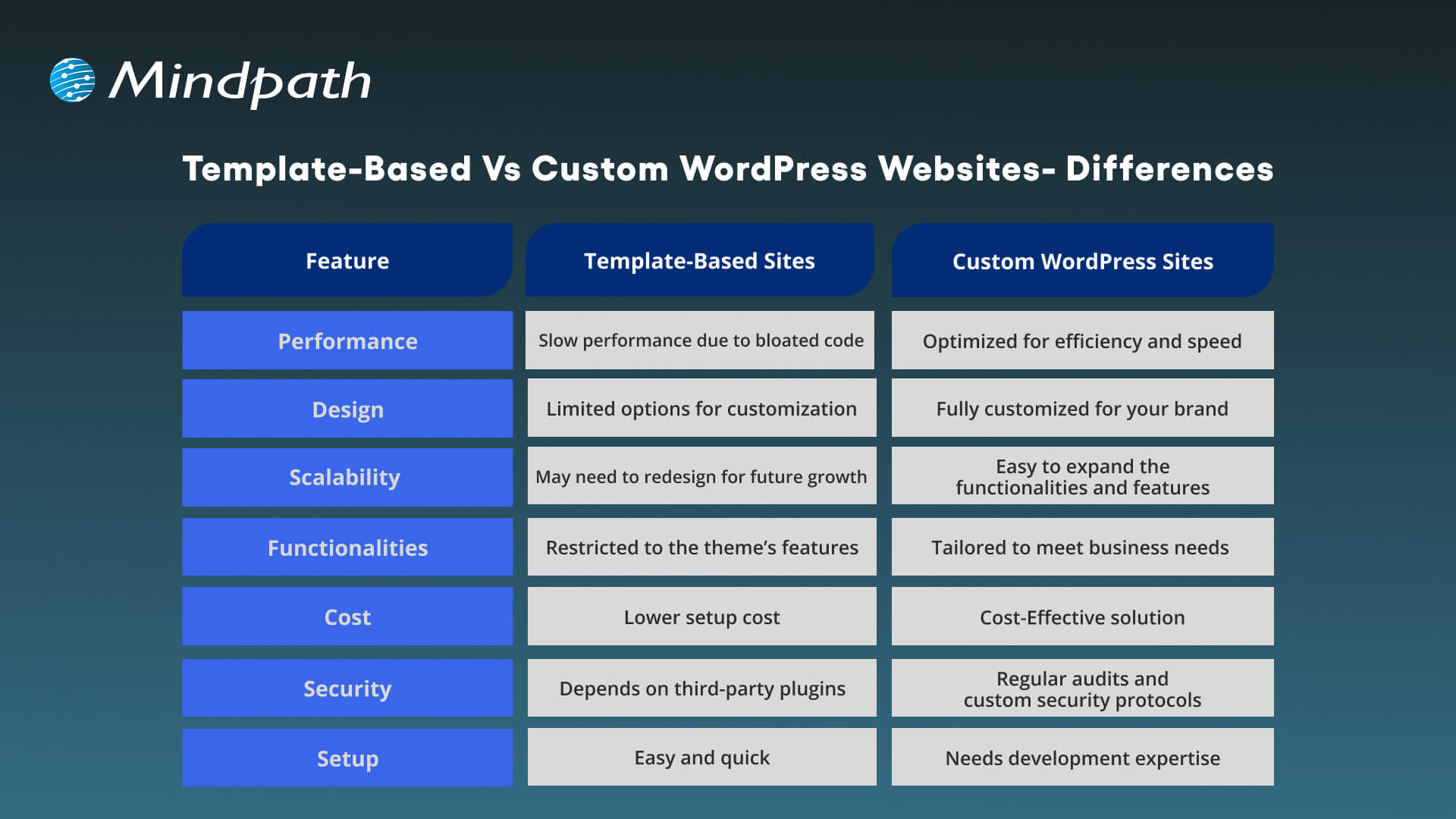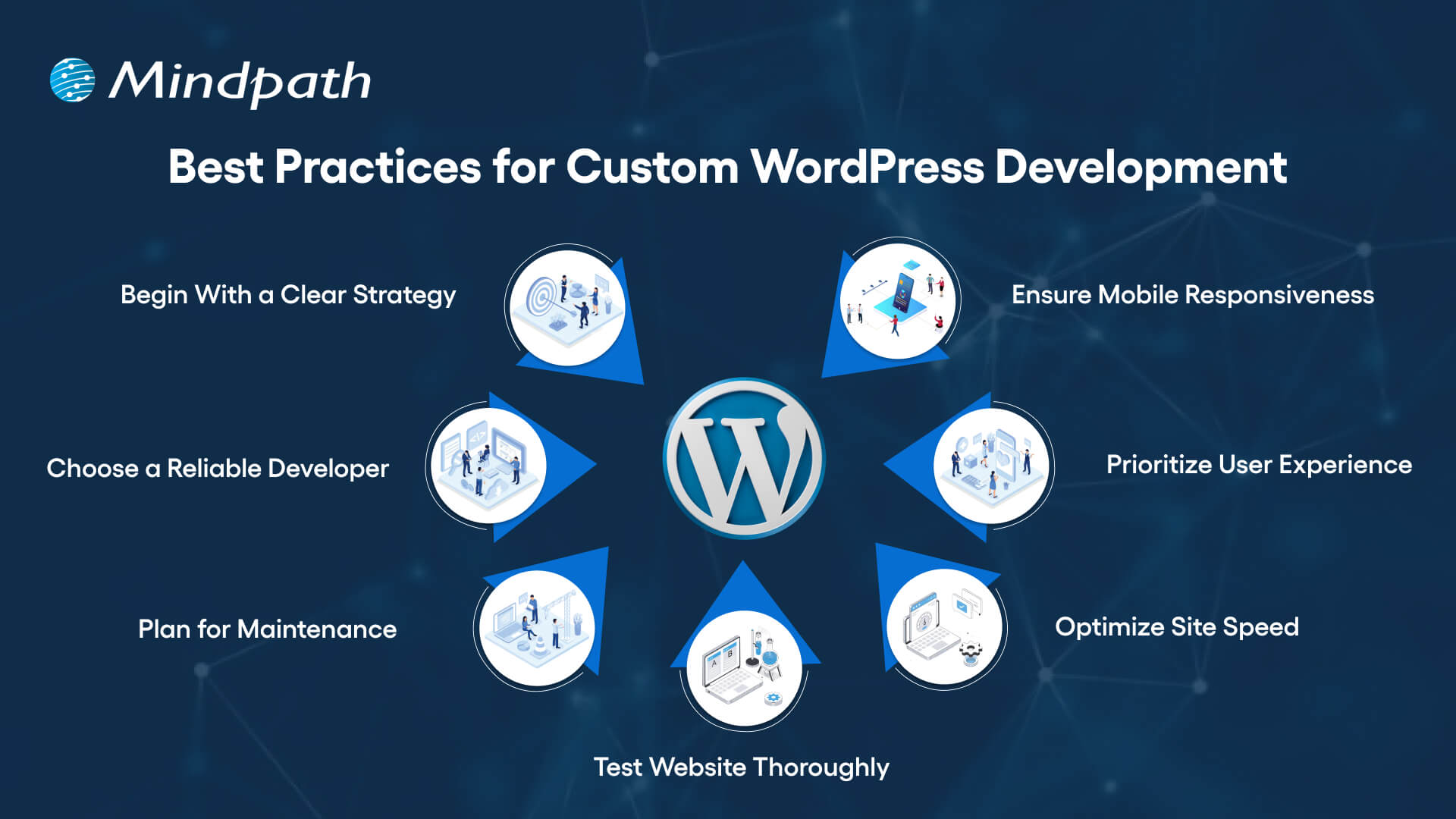In today’s digital-first world, creating applications that are fast, responsive, and scalable is vital for business success. And for this, they need to choose the right technology stack as it can make or break their custom application. Among the many options available to choose from, the advantages of Node.js make it a standout option for modern businesses aiming for speed, agility as well and development efficiency.
Since its launch in 2009 by Ryan Dahl, this backend technology has transformed how developers create scalable, fast, and real-time web applications, supporting continuous innovation across different industries. But what makes Node.js a standout choice among businesses?
In this blog, we will explore Node’s advantages and understand what it is used for. Besides, we will discuss the pros and cons of Node.js so that you can make an informed decision.
Want to implement these advantages of Node.js into your business? Mindpath Node.js development services will guide you every step of the way on how to create a high-performing web application tailored to your business needs.
Evolution of Node.js
Before diving deep into its advantages, let’s understand how Node.js has evolved. This will help businesses appreciate their current abilities and future potential.
The evolution of this backend tech has been a rapid journey from a simple experimental project to a mainstream web development technology.
1. 2009
Ryan Dahl introduced Node.js. The initial aim was to offer high-performance servers through JavaScript’s V8 engine.
2. Early 2010s
The NPM or Node Package Manager was created. It became the largest software registry ecosystem, accelerating web development projects.
3. Mid 2010s
Socket.io and Express were launched, and in 2011, NPM 1.0 was introduced. In 2014, the project went through some major governance changes.
4. 2015 to 2020
In 2017, when security became a top priority, HTTP/2 and Node.js 8 were launched. During that time, NPM witnessed more than 3 billion downloads. ES modules and Node 10 were introduced in 2018. NPM was acquired by GitHub in 2020.
5. 2020 – Present
Node 16 was launched in 2021. LTS version 18 was introduced in 2022. The launch of ES Modules and other stable module systems, along with TypeScript integration, strengthened its status as a powerful enterprise platform. Node.js 24 was released in 2025.
This continuous evolution highlights this backend tech’s growth, business adoption, and strong community, making Node.js a backbone of today’s backend development.
Why Global Enterprises and Businesses Choose Node.js?
Keeping pace with rapid innovation in this competitive tech landscape is not an easy task. New applications, after a few months, struggle to stay relevant as digital standards and user expectations constantly evolve. That’s why businesses need a solid backend technology that can offer better performance and grow with them. Enter Node.js for backend- a future-ready and dynamic solution that is trusted by some of the biggest and popular brands in the world.
Fortune 500 enterprises like LinkedIn, PayPal, eBay, Walmart, and Trello are using this tech as a core part of their tech stack. Node.js development allows businesses to leverage its flexibility, scalability, and speed to power modern applications and experience the amazing advantages of node.js. The rising demand for Node.js shows its ease of use and reliability, making it an excellent choice for businesses and developers. Whether you are creating a full-scale business platform, microservice, or API, Node.js can offer the innovation and consistency you need to enjoy a competitive edge.
Now, let’s talk about some major benefits of Node.js and explore how it is helping businesses in this competitive digital landscape.
Advantages of Node.js- A Perfect Option for Your Web App
Node.js has become a game-changing backend tech for modern businesses, providing them with a perfect combination of cost-efficiency, scalability, and performance. Here are some impressive advantages of Node.js that organizations of all sizes can witness when deployed correctly.
1. Cross-Platform Application Development
With powerful frameworks such as NW.js and Electron, Node.js supports the creation of high-performance cross-platform desktop apps. Developers can utilize Chrome Developer Tools to code, build, debug, and streamline the development process.
Furthermore, they can leverage frontend frameworks such as React, Vue.js, and Angular to create versatile applications. This is a major nodejs advantage for every business.
2. Reduced Loading Time
It comes with a caching module to store frequently used data in memory. This, in turn, reduces loading time while enhancing user experience. It enables efficient request handling and quick page rendering.
3. Superior Performance
Node.js uses the V8 engine to compile JavaScript into machine code and offers excellent performance. Furthermore, the single-thread event loop and non-blocking I/O model enable asynchronous tasks to function efficiently.
4. Scalable Web Applications
One of the most significant advantages of Node.js is that the tech is scalable. It is designed to support multi-threaded execution. Besides, the cluster module helps it to balance CPU-bound tasks. As a result, multiple Node instances can run smoothly simultaneously.
Moreover, it enables horizontal partitioning, enabling apps for personalized user experience considering the user’s location, age, interests, and languages.
5. Efficient Handling of Concurrent Requests
It works great at managing multiple concurrent users. That’s why most e-commerce platforms and complex web apps are developed using Node.js. By handling simultaneous requests, it ensures smooth performance of your web app during high traffic.
6. Active and Massive Community Support
Node.js has a growing global community aligned with strong corporate support from Netflix, Facebook, Amazon, and Google. The NPM provides developers with access to thousands of libraries and tools without any cost. On the other hand, GitHub offers a lot of open-source resources.
All these benefits of node js are enough to prove why it is a top choice among developers and organizations for backend development.
Disadvantages of Node JS
While the advantages of node js are quite impressive, it’s vital to acknowledge that this technology has some challenges. Here are some key disadvantages of node js to consider.
1. Challenge of Mastering Asynchronous Logic
For scalability, Node.js utilizes asynchronous programming. However, managing promises and callbacks can be very challenging for developers who have used the linear blocking I/O programming.
2. Dependency on Third-Party Libraries
JavaScript doesn’t have strong native libraries. That’s why developers depend on third-party packages for various tasks. This may lead to dependency management problems and security risks.
3. Frequent API Updates
Frequent updates often break changes and force developers to refactor code after every update. Well, while updates are critical but they can disrupt workflows, demanding constant attention to version compatibility and maintenance effort.
4. Lack of Standardized Structures
Node.js is a runtime and offers maximum flexibility. However, it lacks an opinionated, rigid structure. This may lead to inconsistencies among large teams.
Most of these disadvantages can be eliminated with the right tooling, strategic planning, and team training. Node.js remains an excellent choice, but it’s vital to compare nodejs pros and cons, considering your project’s unique needs, to come up with the right solution.
Applications of Node.js
As discussed above, Node.js is a robust runtime environment that allows developers to create efficient, fast, and scalable server-side applications. Node js benefits and versatility make it suitable for different real-world applications across various industries.
A common application of node js is real-time web apps. For instance, live dashboards, chat platforms, and collaborative tools. Its support for WebSockets and event-driven architecture enables seamless bi-directional communication between server and client. Apart from this, Node.js is also a crucial tech in API development, deploying GraphQL and RESTful services that smoothly handle thousands of requests while maintaining low latency.
Another useful application of Node.js is product catalogs for eCommerce websites. Besides, it is also used to enable real-time inventory updates and to offer personalized user experiences. Additionally, Node.js is a great choice for creating microservice architectures and desktop app development.
In summary, its rich ecosystem and cross-platform support make Node.js a top choice across industries for modern backend development.
Future of Node.js for Backend Development
The advantages of Node.js clearly show that it is a cornerstone of today’s backend development. However, it is still evolving, and in the future, we can expect to see more innovations. The OpenJS Foundation and Node.js community will invest heavily in:
1. Advanced Security and Diagnostic
Optimizing tooling for monitoring, performance, vulnerability management, and debugging.
2. Worker Threads
Increasing support for CPU-intensive tasks, enabling developers to offload heavy tasks without affecting the main event loop.
3. Expanded Serverless Compatibility
Strengthening Node.js for various serverless platforms such as Azure, AWS, etc., making it more powerful for event-driven and scalable architectures.
4. Edge Computing and IoT
Node.js’s event-driven architecture and lightweight footprint will continue to play an important role in building IoT applications and apps for edge computing.
5. Enhanced Support for ES Modules
Node.js is expanding support for ECMAScript or ES Modules. As ES Modules are a crucial element in web development, the trend will continue, allowing developers to enjoy better compatibility with modern libraries and JavaScript code.
With industries increasingly adopting real-time applications, cloud-native systems, IoT solutions, and micro services, Node.js will remain a dominant player in this field. Besides, we can’t ignore the Node.js advantages which are supporting its growth.
Creating A Digital Future on a Robust Node.js Foundation
After going through the pros and cons of Node.js, it can be said that Node.js has a lot of benefits instead of disadvantages. And the primary reason behind this is its amazing features, active community support, and evolving architecture. If you want to experience these Node.js benefits, then it is advisable to partner with an expert who understands this technology and uses it to offer a tailored solution.
When it comes to choosing the best Node.js expert to enjoy the maximum advantages of Node.js, you may not find a better option than Mindpath. From optimizing asynchronous performance to creating modular microservices, our Node.js development services make sure that Node.js is correctly deployed, offering you inclusive, responsive, and fast applications. Besides, we can guide you through the best practices in this tech’s architecture and security. Choose us and get ready to build faster and smarter digital solutions based on Node.js.


















